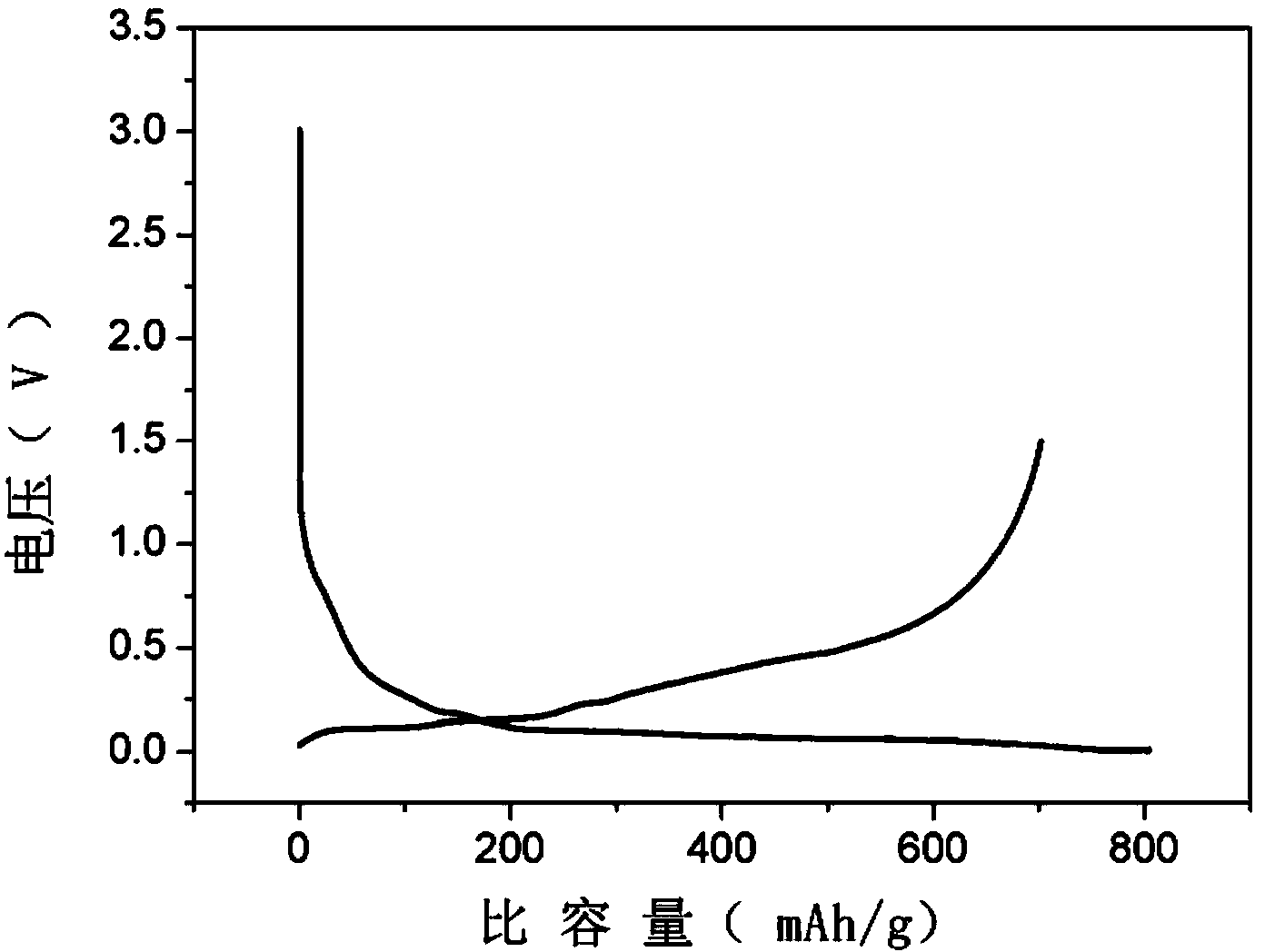Graphite silicon-based composite anode material and preparation method thereof
A negative electrode material and composite material technology, which is applied in the preparation process of graphite silicon-based composite negative electrode materials for lithium-ion batteries, can solve problems such as difficult to avoid nano-silicon agglomeration, achieve high specific surface energy, high initial charge and discharge efficiency, Simple operation effect
- Summary
- Abstract
- Description
- Claims
- Application Information
AI Technical Summary
Problems solved by technology
Method used
Image
Examples
Embodiment 1
[0050] In the presence of an ethanol dispersion medium, use a grinder to grind silicon, and add maleic acid to the silicon grinding solution to control the pH value of the silicon grinding dispersion to 5.8 and the mass solid content to 13%, and set aside. The average particle size of the silicon particles in the silicon polishing liquid is 150nm.
[0051] Preparation of polymer / nano-silicon composite microsphere emulsion: In a four-port glass reactor equipped with a reflux condenser, a thermometer, and a nitrogen pipe, add 58.8 g of 17% polyvinylpyrrolidone PVP ethanol solution, 20% nano Siliconethanol dispersion 125g, ethanol 193.3g, be warming up to 65 ℃, in system, add dropwise the mixed monomer solution containing benzoyl peroxide initiator (0.85g benzoyl peroxide is dissolved in 60g styrene and 40g propylene Nitrile mixed monomer), the dropping time is 30min, after the dropping is completed, the insulation reaction is carried out for 7h, and the polymer / nano-silicon comp...
Embodiment 2
[0055] Preparation of nano-silicon dispersion liquid: prepared as in Example 1, the average particle diameter of silicon particles in the silicon grinding liquid is 150nm.
[0056] Preparation of polymer / nano-silicon microsphere emulsion: In a four-port glass reactor equipped with a reflux condenser, a thermometer, and a nitrogen vent pipe, add 70.5 g of 17% polyvinyl butyral PVB ethanol solution, 20% 105g of nano silicon ethanol dispersion liquid, isopropanol 180.8g, be warming up to 70 ℃, dropwise add the mixed monomer solution containing benzoyl peroxide and azobisisobutyronitrile mixed initiator (0.57g over Benzoyl oxide and 1.20g of azobisisobutyronitrile are dissolved in a mixed monomer of 70g of styrene and 30g of acrylonitrile), and the time for the dropwise addition is 30min. It is a polymer / nano-silicon composite microsphere emulsion with 26.77% and an average particle diameter of 4220nm.
[0057] Liquid-phase compounding of polymer / nano-silicon composite microspher...
Embodiment 3
[0060] Preparation of nano-silicon dispersion: prepared as in Example 1, the obtained nano-silicon dispersion had a solid content of 20%, and the average particle diameter of silicon particles in the silicon grinding liquid was 180 nm.
[0061]In a four-port glass reactor equipped with a reflux condenser, a thermometer, and a nitrogen duct, add 75 g of ethanol solution of 17% polyvinylpyrrolidone PVP, 123.6 g of 13% nano-silicon ethanol dispersion, and 200 g of isopropanol. Contain the mixed monomer solution of benzoyl peroxide and azobisisobutyronitrile mixed initiator (2.86g benzoyl peroxide and 4.14g azobisisobutyronitrile are dissolved in 60g of α-methylstyrene and 40g of prepared from mixed monomers of methacrylonitrile), the titration time is 30min, the temperature is raised to 70°C, and the heat preservation reaction is carried out for 7h to obtain a polymer / nano-silicon composite microsphere emulsion with a solid content of 28.2% and an average particle diameter of 1100...
PUM
| Property | Measurement | Unit |
|---|---|---|
| particle diameter | aaaaa | aaaaa |
| particle diameter | aaaaa | aaaaa |
| particle diameter | aaaaa | aaaaa |
Abstract
Description
Claims
Application Information
 Login to View More
Login to View More - R&D
- Intellectual Property
- Life Sciences
- Materials
- Tech Scout
- Unparalleled Data Quality
- Higher Quality Content
- 60% Fewer Hallucinations
Browse by: Latest US Patents, China's latest patents, Technical Efficacy Thesaurus, Application Domain, Technology Topic, Popular Technical Reports.
© 2025 PatSnap. All rights reserved.Legal|Privacy policy|Modern Slavery Act Transparency Statement|Sitemap|About US| Contact US: help@patsnap.com


